By learning more about Napa’s great Cabernet wines, we can better understand what makes this varietal exceptional and learn to spot Napa Valley and California wines with great promise and potential.
It all started with a little too much ambition…
Had it not been for the overambitious visions of just a few individuals, Napa Valley might have never become one of the most important wine regions in the world.
New Guide: Discover up-to-date information with our new dynamic Napa Valley Region Guide!
When Napa Valley was a fledgling wine region, America’s obsession for Bordeaux wines was feverishly high. At the time, Jackie Onassis was known to sip Château Haut-Brion Blanc in the White House. Napa’s vintners no doubt observed Bordeaux’s success and looked to the region for inspiration.
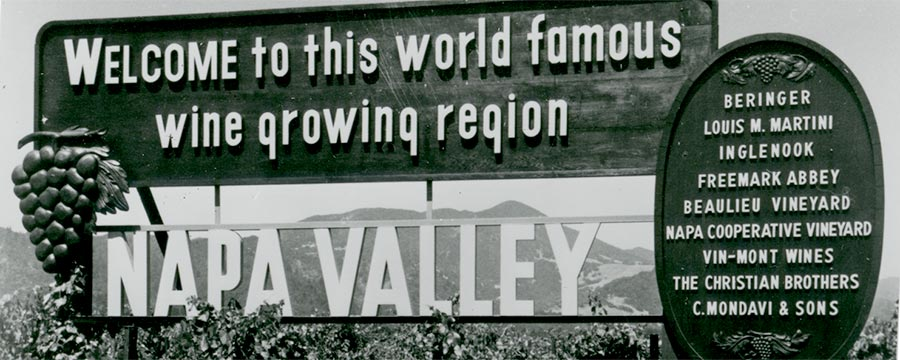
Since Napa Valley winemakers couldn’t simply make a wine with the Bordeaux name on the label, they did the next best thing: they imported Bordeaux grapes (including Cabernet Sauvignon and Merlot) and learned French winemaking techniques.
You have to remember, that back then, most California wines were sold in jugs (or worse, tanks!) and aged in large redwood vats–a very different scene than the production process that takes place today.
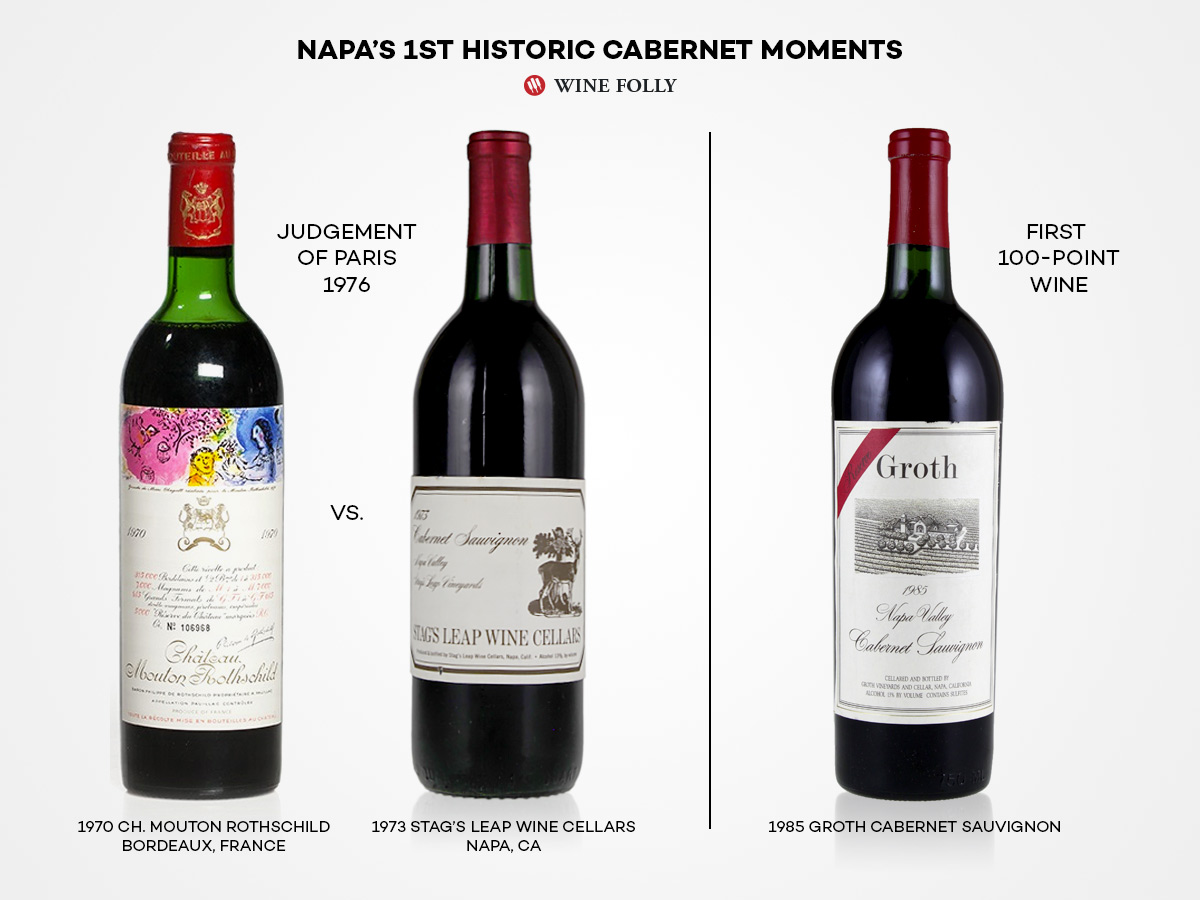
It wasn’t until the 1970s and 1980s that Napa Valley showed the world they meant business with Cabernet Sauvignon. In 1976, a private wine competition in Paris judged by several top French trades compared current releases of Bordeaux and Napa wines (often thought to be inferior to their European counterparts).
Later dubbed as the “Judgment of Paris,” the tasting results showed that American Cabernet wines could stand toe-to-toe with the most important Bordeaux wines of the time. Then, a decade later, the well-known Bordeaux wine critic, Robert Parker, awarded the 1985 Groth Cabernet Sauvignon a perfect 100-point score.
Understanding Napa Cabernet
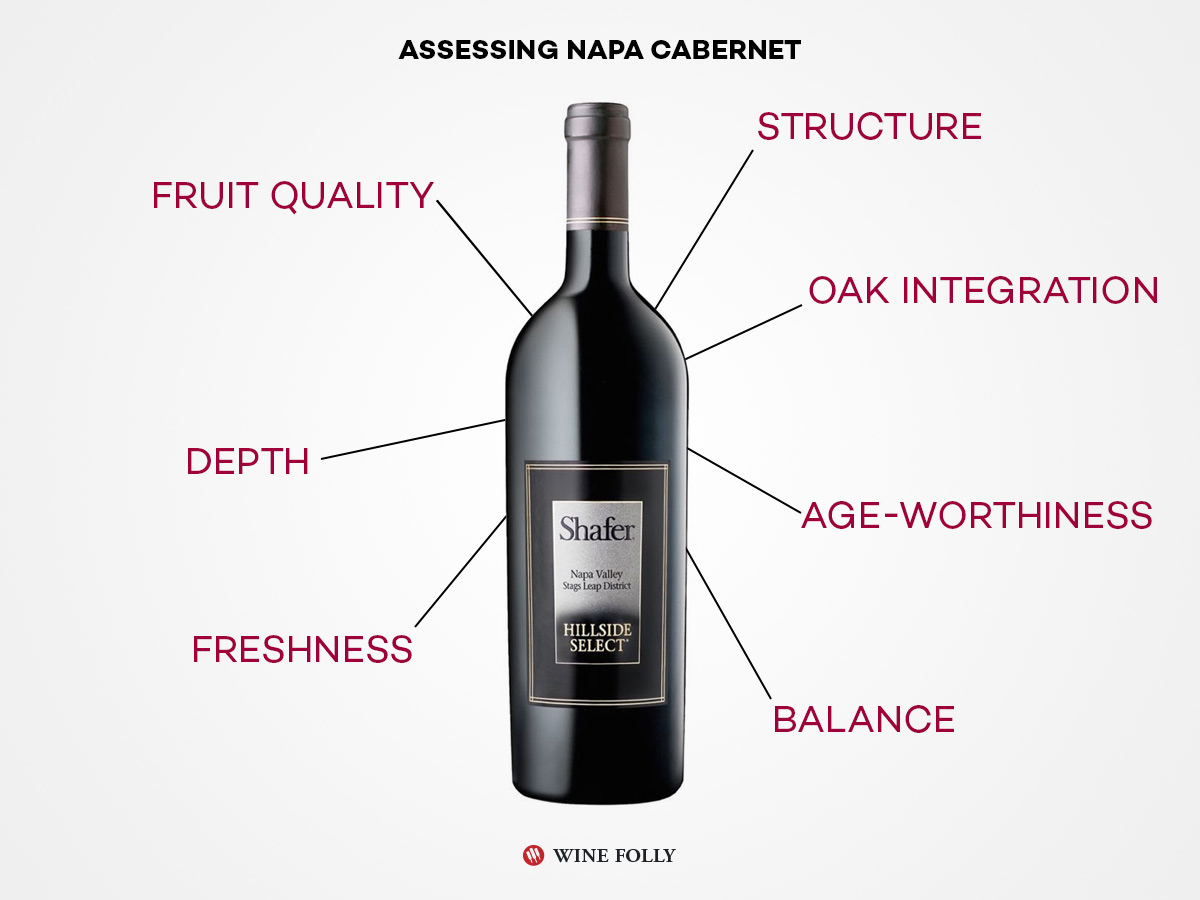
When a wine critic assesses Napa Cabernet Sauvignon there are several features and characteristics they look for:
- Fruit Quality
- The best Napa Cabernet wines consistently exhibit flavors of black currant, ripe (not baked) plum, subtle licorice, black cherry, raspberry, as well as blueberry and/or blackberry. All of these tasting notes associated with Cabernet indicate the grapes were perfectly ripe when picked.
- Depth of Flavor
- Having depth means that wines reveal layers of flavors that evolve over the duration of the tasting experience, which can sometimes be more than a minute long. For example, flavors may start out as fruity and then become more minerally (pencil lead or “dusty”) or floral (violets or sage) and then finish with oak-aged notes (such as cedar, mocha, espresso and tobacco) and textured with tannin.
- Freshness (Acidity)
- Floral notes and terms like “elegance” or “grace” indicate that the wine has good acidity–an age-worthy trait.
- Structure (Tannin)
- Tannins can range from fine-grained to firm, but what’s important is that they are well-integrated, meaning they match the intensity of the other components in the wine (fruit flavors, acidity, and alcohol).
- Oak
- The use of oak is always present in the best Napa Cabernet wines, the question isn’t how much oak is used specifically (because it varies), but rather how that oak comes across in the taste. When used well, oak acts like seasoning that brings out the other flavors in the wine.
- Overall Balance
- The highest-quality wines all have intense flavor (and a high level of color extraction) but all the components in the wine are perfectly balanced with one another.
- Age-Worthiness
- While the late 1990s and early 2000s had several top Napa Cabernets with estimated aging periods of just 10-12 years, the more modern wines appear to age longer, starting at 15 or more years.
Here’s an Example of a Critical Review
2008 Araujo Cabernet Sauvignon from Eisele Vineyard in Oakville AVA, Napa Valley
Dense, rich, and enormously concentrated, mixing power with finesse. Pure, ripe, riveting aromas of blackberry, blueberry, currant, sage, cedar, espresso, and mocha lead to a full-bodied palate, firming beautifully on the finish, where the flavors glide along and gain traction. Drink now through 2028. James Laube, Wine Spectator
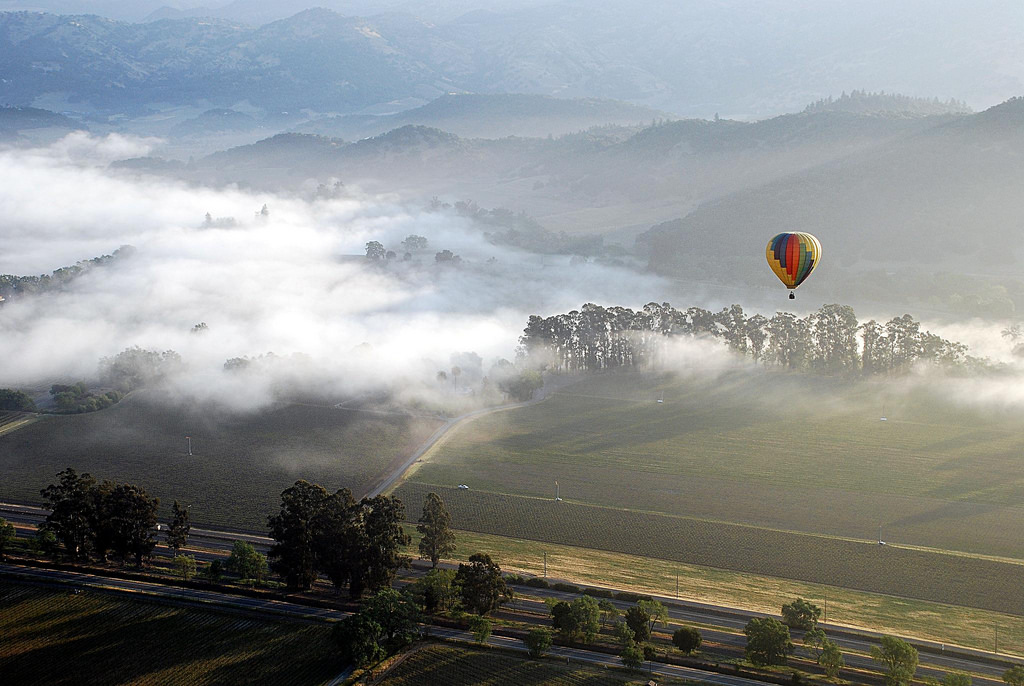
What Makes Napa Valley Ideal for Cabernet Sauvignon?
For one, you’ve got to have the right climate…
When it comes to producing great wine, it starts with growing great grapes. In the case of Cabernet Sauvignon vines, they have been shown to be best suited for a sunny, warm (and not too hot) climate so that the grapes ripen slowly. While many places in California are quite hot indeed (and increasingly so), Napa Valley’s location on the San Pablo Bay causes an induction effect at night that delivers morning cloud cover. The morning fog slows certain aspects of ripening. Additionally, the AVAs within Napa Valley that are above the clouds (Howell Mountain, Atlas Peak, etc.) have higher elevation to use to their advantage. Higher temperature shifts between night and day in the hills slow certain aspects of ripening (e.g. by maintaining acidity).
Expect to spend: These days it’s hard to spend less than $50 for a good bottle of Napa Valley Cabernet Sauvignon.
The quality of Napa’s soils…
There are many different soil types that are well-suited for Cabernet Sauvignon and ultimately what’s important is good drainage and not too much soil fertility. The low fertility puts the vines in a state of stress earlier in the growing season, which shifts the vine’s focus from growing leaves to ripening grapes. What makes Napa Valley special (especially as a New World region) is a prevalence of volcanic soils which unexplainably add an earthy, “dusty” taste to Napa’s best wines. Since earthiness and minerality are not common in New World wine regions, this “dustiness” adds complexity to Napa wines.
Where there’s great Cabernet, there’s great Merlot: If you’re a Cabernet fanatic, Napa Valley’s Merlot offers incredible density that’s on par with other Cabernet wines. Surprisingly, it’s shockingly affordable compared to the cost of an average bottle of Napa Cabernet.
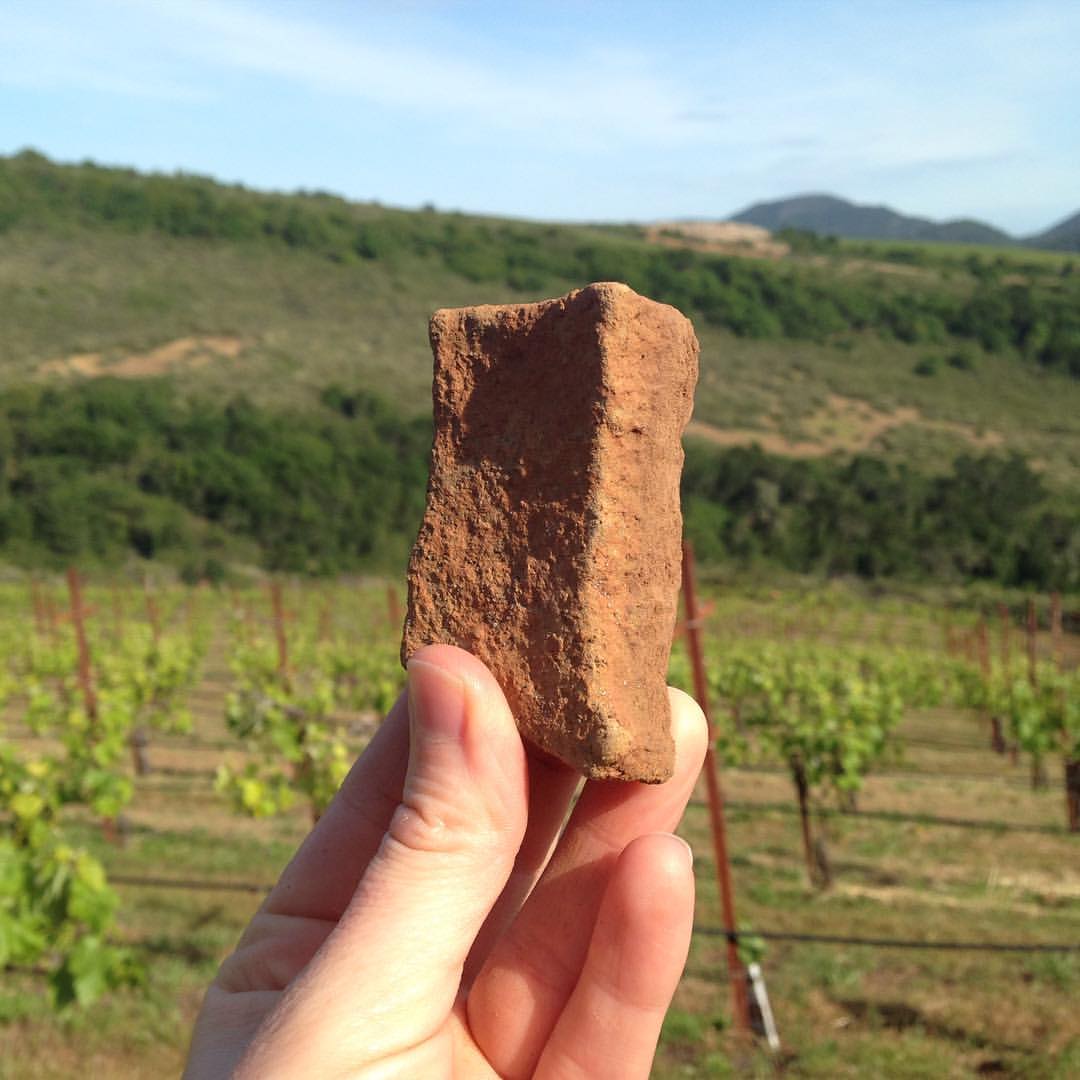
Where to Find the Best Cabernet Sauvignon Wines in Napa:
There really isn’t a single best spot in Napa for Cabernet Sauvignon, because it’s a matter of taste. That said, we’ve observed two distinct styles of Napa Cab based on where they grow. Each have their own style and unique features so it’s ultimately up to you to decide.
Napa Valley Floor Wines
Lush and refined…
Flavors: Blueberry, Ripe Plum, Black Cherry, Licorice, Mocha, and Violet (or mint). Usually, well-rounded with more refined flavor profiles along with fine integrated tannins.
Features: If you’re into lush, bold, and opulent Cabernet wines with a dominance of fruit (vs. other) flavors then the Napa Valley AVAs are likely to make you very happy. These wines show marvelously in their first decade and then, if you’re lucky, hit another sweet spot at around 15 or so years of age. If you follow ratings, the valley Cabs are generally well-loved by the critics too and garner the highest ratings.
Napa Hillside Wines
Dusty and bold…
Flavors: Black Currant, Black Cherry, Wild Berry, Spicebox, Anise, Espresso, Cedar, and Sage. Wines have more rustic flavor profiles with heightened minerality and earthiness, supported by firm tannins.
Features: If you’re into bold, smoky, and mineral driven Cabernet wines with good structure (AKA tannins) then the hillside AVAs of Napa are likely to make you very happy. The more variable temperatures on the hills produce smaller berries which in turn add additional color and tannin to the wines. These wines generally take longer to come around due to the higher tannin (maybe 5–10 years) but when they do, they become more lithe and supple.
Famous Vineyards of Napa organized by AVA
If you’re interested in knowing more, here is a list of some of the most prominent vineyards of Napa. You’ll see a prevalence in Oakville, but due to climate change, we’ll expect to see some up-and-coming regions (like Coombsville and Wild Horse Valley) produce the future of quality in Napa.
Coombsville
Farella Vineyard, Coombsville, (producers: Di Costanzo, Farella Vineyard, Realm Cellars, Agharta)
Kenzo Estate Vineyards, Coombsville / Wild Horse Valley (producers: Kenzo Estate)
Atlas Peak
Stagecoach Vineyard (producers: Arrow & Branch, Arkenstone, Caine, Miner, Chappellet, Paul Hobbs, MacLaren)
Pahlmeyer Estate Vineyard (Atlas Peak area) (producers: Pahlmeyer)
Oakville
Beckstoffer To Kalon (producers: Schrader, etc)
Harlan Estate (producers: Harlan)
Screaming Eagle (producers: Screaming Eagle)
Showket (producers: Peter Michael, Showket, Bevan )
Heitz Martha’s Vineyard Oakville (producers: Heitz)
Beckstoffer Missouri-Hopper (producers: Alpha Omega, Bacio Divino, Bure Family, Morlet, Hess Collection, Venge Family)
Dalla Valle (Eastern side of Oakville) (producers: Dalla Valle)
Rutherford
Staglin Vineyards (producers: Staglin Family Vineyard)
Beckstoffer Georges III (producers: Bell Cellars, Bryter Estates, Hunnicutt, Keating, Schrader)
Stag’s Leap District
Fay Vineyard (producers: Stag’s Leap Wine Cellars)
Saint Helena
Spottswoode (producers: Spottswoode)
Capella S (producers: Abreu)
Madrona Ranch (producers: Abreu)
Beckstoffer Dr. Crane Vineyards (producers: Alpha Omega, Realm, B. Cellars, Myriad, Arrow & Branch)
Chappellet (in Prichard Hill Area) (producers: Chappellet)
Bryant Family (in Prichard Hill Area) (producers: Bryant Family)
Calistoga
Eisele Vineyard (producers: Araujo)
Howell Mountain
Thorevilos Vineyards Between Saint Helena and Howell Mountain (producers: Abreu)
Herb Lamb Vineyards Between Saint Helena and Howell Mountain (producers: Colgin, Herb Lamb, Turley, Trujillo)
Beatty Ranch Vineyards (producers: Vie Winery, Far Niente, Howell Mountain Vineyards)
Spring Mountain District
Cain Vineyard (producers: Cain Five)
Diamond Mountain District
Diamond Creek Volcanic Hill (producers: Diamond Creek)

Mustard grows in the vineyards in February. Photo by Tucker Hammerstrom.

